Botswana - Botswana (English spelling)

|
A landlocked country in southern Africa. Its official name is the Republic of Botswana. Formerly known as Bechuanaland. It borders Namibia from the west to the north, Zambia in part of the north, Zimbabwe to the east, and South Africa to the south. It has an area of 581,730 square kilometers, most of which is the Kalahari Desert, and a small population of 1,651,296 (2000). Its capital is Gaborone. [Akifumi Hayashi] Nature and GeographyThe eastern part of the country is a savanna zone where 80% of the population lives, and they make their living from agriculture and livestock farming. The Limpopo River flows along the eastern border. The central and southern parts are made up of the Kalahari Desert. Unlike the Sahara Desert, there are shrubs and grasslands, but there is no surface water except during the rainy season. The San people live here by hunting and collecting plants. The Okovango River flows through the northwest, forming the Okovango Marsh, which covers an area of about 18,000 square kilometers, and Lake Ngami and the Makarikari Salt Lake are full during the rainy season. The country has a highly dry subtropical climate, with high temperatures in summer and frost in winter. Rainfall is summer-type (December to March), with an average annual rainfall of 250 mm nationwide, and the country is often hit by droughts. [Akifumi Hayashi] historyBotswana's indigenous people were the San people who migrated from the north, but in the mid-17th century, the Bantu-speaking Tswana people migrated, and the San people migrated to the Kalahari Desert. In the 1820s, the Zulus from South Africa invaded, and from the 1840s onwards, the Boers from the Transvaal Republic frequently invaded. As a result, Tswana King Khama III sought protection from the UK in 1882, and the British Protectorate of Bechuanaland was established in 1885. In 1894, it was almost placed under the control of the British South African Charter Company, but due to petitions from the residents, it was incorporated into the Cape Colony in 1895, and when the Union of South Africa was established in 1910, it became a dependent territory. After that, Botswana came under the jurisdiction of Mafeking, the British High Commissioner to the Union of South Africa. The UK exercised indirect rule, preserving the African chiefdom system, and it was only after the establishment of the European Consultative Council in 1920 and the African Consultative Council the following year that a modern political system was introduced. The 1960 Constitution established a Legislative Council, an Executive Council, and an African Council. Khama, the chief of the Bamangwato people, returned to the country with the white woman he had married while studying in the UK, but was again exiled to the UK due to opposition from the South African government, which claimed racial discrimination. Khama abdicated from the throne in 1956 and returned to the country, forming the Bechuanaland Democratic Party (BDP, now the Botswana Democratic Party) in 1962 and demanding independence. The BDP won a landslide victory in the 1965 general election, and Khama became prime minister. Following the London Constitutional Conference in February 1966, Botswana gained independence on September 30 of the same year, with Khama becoming its first president. [Akifumi Hayashi] Politics and DiplomacyThe government is headed by a president (five-year term), and the legislature is made up of a parliament and a council of chiefs consisting of the chiefs of the eight major tribes. Parliamentary general elections are held every five years, and the BDP has won every election by a landslide. It is one of the few African countries where political parties are free to participate, and the opposition parties include the Botswana People's Party (BPP), the Botswana National Front (BNF), and the Botswana Congress Party (BCP). Immediately after independence, Botswana joined the United Nations, the Organization of African Unity (now the African Union), and the Commonwealth of Nations. However, after President Khama's speech at the UN General Assembly in 1969, Botswana made clear its support for the black liberation struggle in southern Africa, and in 1974, it formed the Frontline Nations with Tanzania, Zambia, Mozambique, and Angola, which supported the Zimbabwean liberation struggle and provided refuge for political refugees. In July 1980, Khama died of illness and was replaced by Vice President Q. Masire, but his policies have not changed. In 1998 Masire retired and was succeeded by Vice President Mogae, who was re-elected in 1999. The armed forces consist of 8,500 army personnel, 500 air force personnel and 1,000 others. [Akifumi Hayashi] Economy and IndustryTraditionally, Botswana's main industry was livestock farming, with meat and cattle being the main exports to South Africa, and in return, most of the industrial products and daily necessities were imported from that country. However, mineral resources were discovered in the late 1960s, and development began in the early 1970s, making Botswana a mining-based nation today. The diamond mines in Orapa in the central region are mined by South African De Beers, and the copper and nickel mines in Selebi-Phikwe in the eastern region are mined by Bamangwato Concession Company, a joint venture between South African Anglo American (30% shareholding), American Lone Selection Trust (30%), and the government (40%). Livestock farming remains important, and with the signing of the Second Lomé Agreement with the European Community (EC) in 1979, meat exports changed from South Africa to the EC (later the EU). Industry is underdeveloped, and there is nothing of note except for the slaughterhouse in Lobatse. Its main exports are diamonds, copper, and nickel minerals, as well as meat and cattle, and it imports most of its industrial products, food, and daily necessities. Its main trading partners are the United Kingdom and South Africa, but since 1979 the EC has become more important. Botswana is a landlocked country without a port, and has formed a customs union with South Africa, Lesotho, and Swaziland (now Eswatini), and uses South Africa's ports. In addition, more than 40,000 Botswanans migrate to South Africa every year to work in mines and other places. In order to break away from this economic dependence on South Africa, the frontline countries gathered in 1979, and the following year, Zimbabwe, Swaziland, Malawi, and Lesotho were added to form the Southern African Coordination and Development Council (which became the Southern African Development Community in 1992). As a result, with the aid of developed countries, development at the regional level is being promoted, including the restoration and construction of transport and telecommunications networks, food security, industrial development, and energy security, and Botswana is in charge of the eradication of foot and mouth disease and plans for drought countermeasures.As for economic development, the Seventh National Development Plan (1991-1997) has been implemented, aiming to reduce dependence on diamonds and diversify the economy. [Akifumi Hayashi] Society and CultureThe main ethnic groups are the eight Bantu-speaking tribes of Bamangwato, Bakgatla, Bakwena, Bangwaketse, Batawana, Bamalete, Batlokwa, and Barolong, as well as a small number of San people living in the Kalahari Desert. Most of the major cities, including the capital, are located along the railway line along the eastern border. The official languages are English and Tswana. Before the mining development, Botswana was one of the least developed countries (LLDCs), but now, with a per capita gross national income of $3,300 (2000), it has escaped from being one of the poorest countries. However, due to the underdevelopment of domestic industries, the employed population is small, with 48.5% of the workforce engaged in agriculture (livestock farming), and many migrant workers working in the mines of the Republic of South Africa. After independence, emphasis was placed on education, and a free education system (10 years) was implemented in 1986, with an enrollment rate of 83% (1990). There is also the National University of Botswana with 4,466 students (1993). Medical facilities are behind the times, there are a shortage of hospitals and beds, and doctors are dependent on foreigners. The number of paved roads is about 4,200 kilometers (1995), and the number of vehicles is just over 100,000 (1994). There is one government newspaper and five private newspapers. [Akifumi Hayashi] [Supplementary Material] |"> Botswana flag ©Shogakukan Illustration/Shogakukan Creative "> Botswana Location Map Source: Shogakukan Encyclopedia Nipponica About Encyclopedia Nipponica Information | Legend |
|
アフリカ南部にある内陸国。正称はボツワナ共和国Republic of Botswana。旧称ベチュアナランドBechuanaland。西から北にかけてナミビア、北の一部でザンビア、東はジンバブエ、南は南アフリカ共和国と国境を接する。面積58万1730平方キロメートル、その大部分がカラハリ砂漠で人口は少なく165万1296(2000)。首都はハボローネ。 [林 晃史] 自然・地誌国土の東部はサバンナ地帯で人口の80%が住み、農業と牧畜を生業としている。リンポポ川が東側国境を流れる。中央部および南部はカラハリ砂漠からなる。サハラ砂漠と違い低木・草地があるが、雨期以外には地表水がない。ここではサン人が狩猟と植物採集によって生活している。北西部はオコバンゴ川が流れ、面積約1.8万平方キロメートルのオコバンゴ沼沢地を形成、雨期にはヌガミ湖、マカリカリ塩湖が満水となる。乾燥度の高い亜熱帯性気候に属し、夏は高温だが冬には降霜もみる。降雨は夏型(12~3月)で、年降水量は全国平均で250ミリメートル、しばしば干魃(かんばつ)にみまわれる。 [林 晃史] 歴史ボツワナの先住民は北から移動してきたサン人であるが、17世紀中ごろバントゥー語系のツワナ人が移住し、サン人はカラハリ砂漠に移動した。1820年代南アフリカのズールー人、1840年代以降はたびたびトランスバール共和国のブーア人の侵入を受けた。そのためツワナ人のカーマ3世は、1882年イギリスに保護を求め、1885年イギリス保護領ベチュアナランドが成立した。1894年イギリス南アフリカ特許会社の支配下に置かれそうになったが、住民の嘆願により1895年ケープ植民地に編入され、1910年南アフリカ連邦が成立するとその属領となった。以後ボツワナはイギリスの南アフリカ連邦駐在高等弁務官であるマフェキングの管轄下に入った。イギリスは間接統治を行い、アフリカ人の首長制支配を温存し、近代政治制度が導入されたのは1920年のヨーロッパ人諮問審議会と翌年のアフリカ人諮問審議会が置かれてからである。1960年憲法制定により立法審議会、行政審議会、アフリカ人評議会がつくられた。バマングワト人の首長カーマはイギリス留学中に結婚した白人女性を伴い帰国したが、人種差別を主張する南アフリカ政府の反対にあい再度イギリスに追放された。1956年王位を捨てて帰国したカーマは1962年ベチュアナランド民主党(BDP、現ボツワナ民主党)を結成して独立を要求した。1965年総選挙でBDPは圧勝し、カーマは首相となり、翌1966年2月のロンドン制憲会議を経て、同年9月30日ボツワナ共和国として独立、カーマは初代大統領に就任した。 [林 晃史] 政治・外交行政府の長である大統領(任期5年)の下に内閣を構成し、立法府として議会と、八つの主要部族の首長からなる首長会議をもつ。議会の総選挙は5年ごとに実施され、いずれもBDPが圧勝している。政党活動が自由な数少ないアフリカの国の一つで、野党にはボツワナ人民党(BPP)、ボツワナ国民戦線(BNF)、ボツワナ議会党(BCP)などがある。独立後ただちに国連、アフリカ統一機構(現アフリカ連合)、イギリス連邦に加盟した。しかし、1969年の大統領カーマの国連総会での演説以降、南部アフリカの黒人解放闘争支援の態度を明らかにし、1974年にはタンザニア、ザンビア、モザンビーク、アンゴラとともにフロントライン諸国を結成し、ジンバブエ解放闘争を支援するとともに、政治的難民に対し避難所を提供している。1980年7月カーマは病死し、かわって副大統領Q・マシレが大統領に就任したが、その政策は変わっていない。1998年マシレは引退し、副大統領モハエが後を継ぎ、1999年の選挙でモハエは再選された。軍隊は、陸軍が8500人、空軍が500人、その他1000人である。 [林 晃史] 経済・産業従来ボツワナの主要産業は牧畜であり、主要輸出品の肉類およびウシを南アフリカ共和国に輸出し、かわりに工業製品、生活必需品の大半を同国から輸入していた。しかし1960年代末に鉱産資源が発見され、1970年代初めから開発が進んで、現在は鉱業立国となっている。中部のオラパにあるダイヤモンド鉱山は南アフリカ共和国系デビアース社が、東部のセレビ・ピクウェの銅、ニッケル鉱山は南アフリカ共和国系アングロ・アメリカン社(株式保有30%)、アメリカ系ローン・セレクション・トラスト社(同30%)、政府(同40%)の三者からなるバマングワト・コンセッション社が採掘している。牧畜も依然重要であり、1979年のEC(ヨーロッパ共同体)との第二次ロメ協定の調印によって、肉の輸出先は南アフリカ共和国からEC(のちEU)にかわった。工業は未発達で、ロバツェのと畜工場以外みるべきものはない。主要輸出品はダイヤモンド、銅、ニッケルの鉱産物のほか肉類、ウシで、工業製品、食糧、生活必需品のほとんどを輸入している。主要貿易相手国はイギリスと南アフリカ共和国であるが、1979年以降ECの比重が増した。港をもたない内陸国であるボツワナは、南アフリカ共和国、レソト、スワジランド(現、エスワティニ)との間で関税同盟を結成し、南アフリカ共和国の港湾を利用している。また毎年約4万人以上のボツワナ人が南アフリカ共和国の鉱山などに出稼ぎに出ている。このような南アフリカ共和国への経済的依存から脱却するため、1979年フロントライン諸国が集まり、翌1980年にはジンバブエ、スワジランド、マラウイ、レソトを加えた9か国が南部アフリカ調整開発会議(1992年、南部アフリカ開発共同体へ移行)を結成した。その結果、先進国の援助を受けて、輸送と電気通信網の復旧・新設のほか、食糧確保、工業開発、エネルギー確保など地域レベルでの開発が推進されており、ボツワナは家畜口蹄疫(こうていえき)の撲滅、干魃(かんばつ)対策の計画を担当している。経済開発については第七次国家開発計画(1991~1997)が実施され、ダイヤモンドへの依存を減らし、経済の多角化を目ざしている。 [林 晃史] 社会・文化主要民族グループにはバマングワト人、バクガトラ人、バクウェナ人、バングワケツェ人、バタワナ人、バマレテ人、バトロクワ人、バロロング人のバントゥー語系8部族のほか、少数のサン人がカラハリ砂漠に住んでいる。主要都市は首都も含め大部分が東部国境沿いの鉄道沿線にある。公用語は英語とツワナ語。鉱業開発以前は後発発展途上国(LLDC)の一つであったが、現在は1人当りの国民総所得が3300ドル(2000)となり、最貧国から脱した。しかし国内産業の未発達のため雇用人口は少なく、労働人口の48.5%は農業(牧畜)に従事し、南アフリカ共和国の鉱山への出稼ぎ労働者も多い。独立後教育が重視され、1986年から無料の教育制度(10年)が実施され、就学率は83%(1990)に達している。また学生数4466人(1993)の国立ボツワナ大学がある。医療施設は遅れており、病院、ベッド数ともに不足し、医師も外国人に依存している。舗装道路キロ数は約4200キロメートル(1995)で、車台数も10万台強(1994)にすぎない。新聞は政府系1紙、民間紙5紙が発行されている。 [林 晃史] [補完資料] |"> ボツワナの国旗 ©Shogakukan 作図/小学館クリエイティブ"> ボツワナ位置図 出典 小学館 日本大百科全書(ニッポニカ)日本大百科全書(ニッポニカ)について 情報 | 凡例 |
<<: Bothe - Walther Wilhelm Georg Bothe
>>: Botulinum - Botulinum Skin
Recommend
Kumiodori - Kumiodori
This musical drama was created in Okinawa in the ...
"African Farm Story" - African Farm Story
…She was born in the Cape Colony of South Africa ...
The Great Qin Dynasty's Jingjiao Popular Chinese Monument - The Great Qin Dynasty's Jingjiao Popular Chinese Monument
This monument records the situation when Nestorian...
Shopping Guide for One Person - Shopping Guide for One Person
A directory of merchants and craftsmen published b...
Freedom of Education
It refers to the freedom to realize an education w...
ant fly
...The family Ant Fly is small (2-5mm). Its body ...
Melanin - Melanin (English spelling)
It is a brown or black pigment synthesized by enz...
Broom - Broom
A tool used to sweep up dust and dirt. There are ...
Product Liability
This refers to the civil liability of a manufactu...
Shukushin - guardian deity
One of the objects of magical worship. Shukushin i...
Drawn work
This is a basic technique for handicrafts, known a...
Girdle-tailed lizard (armored lizard)
A general term for lizards with hard scales in the...
Izanagi Style Prayer - Izanagi Style Prayer
…Medicinal plants are also cultivated. The Izanag...
Taoryu Hills - Yurugi Hills
A hill in the south-central part of Kanagawa Prefe...
sapphism
...Homosexuality, which can be defined as sexual ...
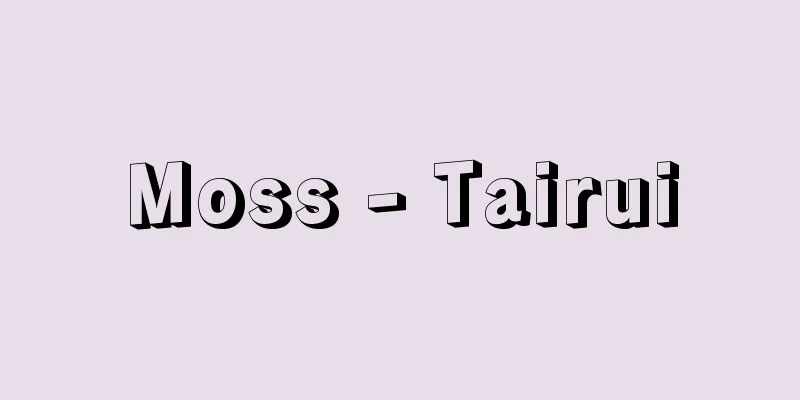
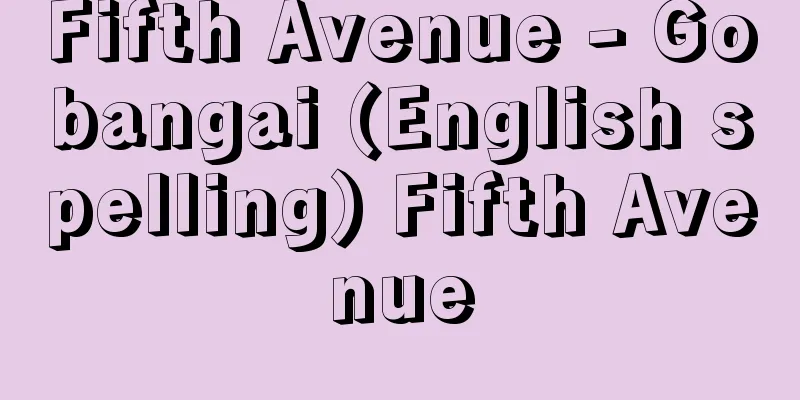
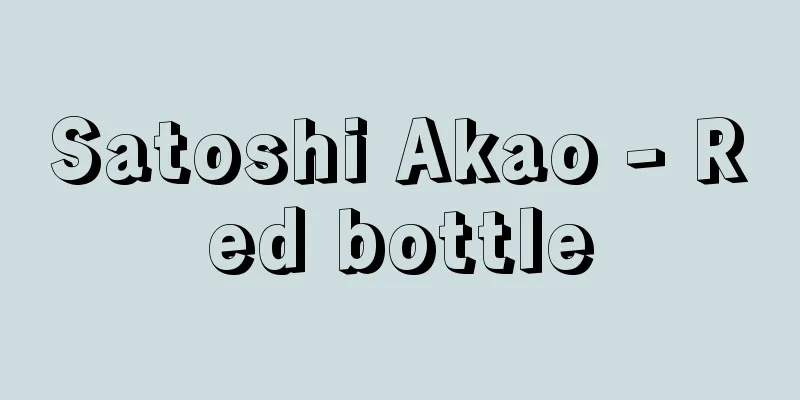

![Hoechst [company] - Hoechst](/upload/images/67ccc74e58d9d.webp)

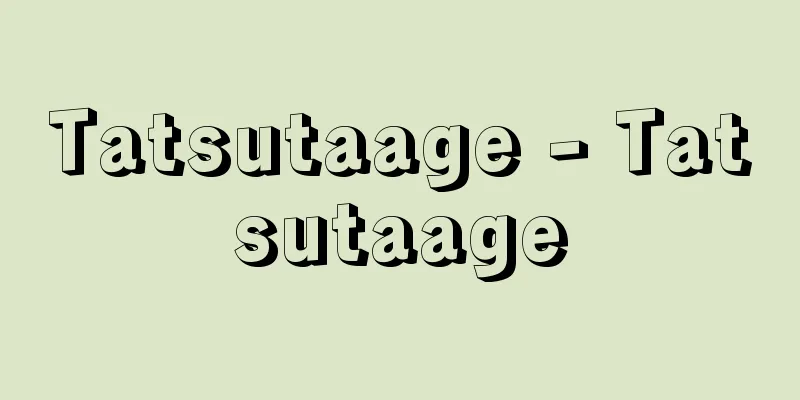
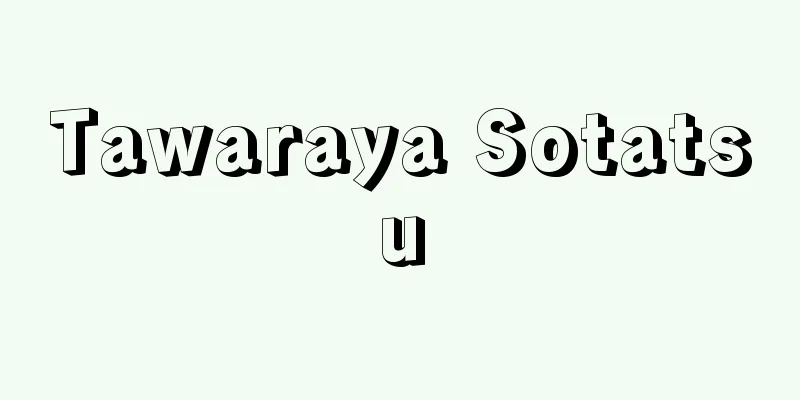

![Ikata [town] - Ikata](/upload/images/67cae584d3854.webp)